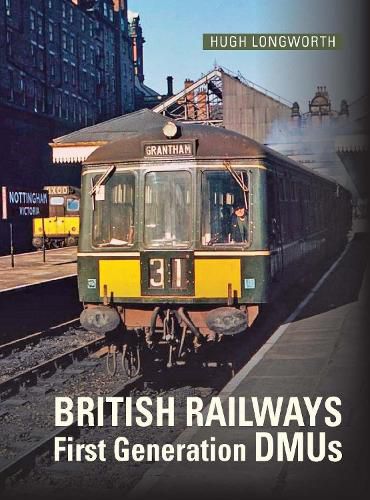Readings Newsletter
Become a Readings Member to make your shopping experience even easier.
Sign in or sign up for free!
You’re not far away from qualifying for FREE standard shipping within Australia
You’ve qualified for FREE standard shipping within Australia
The cart is loading…






First widely introduced from the early 1950s onwards, the diesel multiple-unit represented an attempt to produce a vehicle that would replace steam traction on the country’s branch lines and secondary routes at a time when the railway industry was in desperate need of a cheaper alternative to steam in order to improve the finances of these increasingly unremunerative lines. Over 4,000 vehicles were ordered from both BR works and private manufacturers as part of the BR modernisation plan of 1955.
Following refurbishment from the early 1970s onwards, many first generation DMUs were to survive in service until the late 1980s and early 1990s. Although most were scrapped after withdrawal, a significant number of these vehicles have been preserved on the nation’s heritage railways.
This updated and expanded edition of Hugh Longworth’s classic book on the subject records the great variety of DMU types constructed as part of the programme. Each is covered in detail with information about construction, technical specifications, entry into service, formations, allocations, withdrawal and final fate. This new edition makes full use of colour throughout with many additional photos included. The diagrams have been redrawn and a new section showing the unit formations has been added.
Comprehensive in its coverage, this book will be sought after by all those modellers, preservationists and historians seeking a detailed reference work on the history of first generation DMUs.
$9.00 standard shipping within Australia
FREE standard shipping within Australia for orders over $100.00
Express & International shipping calculated at checkout
First widely introduced from the early 1950s onwards, the diesel multiple-unit represented an attempt to produce a vehicle that would replace steam traction on the country’s branch lines and secondary routes at a time when the railway industry was in desperate need of a cheaper alternative to steam in order to improve the finances of these increasingly unremunerative lines. Over 4,000 vehicles were ordered from both BR works and private manufacturers as part of the BR modernisation plan of 1955.
Following refurbishment from the early 1970s onwards, many first generation DMUs were to survive in service until the late 1980s and early 1990s. Although most were scrapped after withdrawal, a significant number of these vehicles have been preserved on the nation’s heritage railways.
This updated and expanded edition of Hugh Longworth’s classic book on the subject records the great variety of DMU types constructed as part of the programme. Each is covered in detail with information about construction, technical specifications, entry into service, formations, allocations, withdrawal and final fate. This new edition makes full use of colour throughout with many additional photos included. The diagrams have been redrawn and a new section showing the unit formations has been added.
Comprehensive in its coverage, this book will be sought after by all those modellers, preservationists and historians seeking a detailed reference work on the history of first generation DMUs.